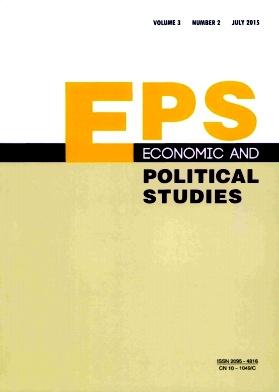Measuring quality of life: A system of indicators
IF 2
4区 社会学
Q2 SOCIAL SCIENCES, INTERDISCIPLINARY
引用次数: 4
Abstract
Abstract In this day and age, improving quality of life (QOL) remains a necessary prerequisite for social progress and the central goal of state policy in many countries worldwide, regardless of their economic development. The aim of this work is to propose a system of indicators able to describe the QOL of the population to the fullest extent possible. The research methodology includes an analysis of modern approaches to explaining the QOL concept and describing its main measurement criteria, as well as a matrix comparison of the fundamental characteristics of well-being. These methods’ application and the subsequently obtained results allow developing the model for the QOL measurement. The system of indicators proposed within this model implies the consideration of both objective and subjective indicators distributed into two blocks for convenience: the Accepted Living Standard (material and environmental indicators) and the Quality of Life Opportunities (individual, cultural, and social indicators). The QOL level is determined by the balance or imbalance between the mean values of these blocks. In such a manner, the study advocates that the modern QOL measurement should consider both objective well-being indicators, collected from the reports of the analysed country’s national statistics service, and subjective indicators characterising the citizens’ perceptions of well-being at the individual level.衡量生活质量:一个指标体系
摘要在当今时代,无论经济发展如何,提高生活质量仍然是社会进步的必要前提,也是世界上许多国家国家政策的中心目标。这项工作的目的是提出一个能够尽可能充分地描述人口生活质量的指标体系。研究方法包括对现代方法的分析,以解释生活质量概念并描述其主要衡量标准,以及对幸福感基本特征的矩阵比较。这些方法的应用和随后获得的结果允许开发用于QOL测量的模型。该模型中提出的指标体系意味着为了方便起见,考虑将客观和主观指标分为两个部分:接受的生活水平(物质和环境指标)和生活质量机会(个人、文化和社会指标)。QOL水平由这些块的平均值之间的平衡或不平衡来确定。通过这种方式,该研究主张,现代生活质量测量应考虑从被分析国家国家统计局的报告中收集的客观幸福感指标,以及在个人层面表征公民幸福感的主观指标。
本文章由计算机程序翻译,如有差异,请以英文原文为准。
求助全文
约1分钟内获得全文
求助全文
来源期刊

Economic and Political Studies-EPS
SOCIAL SCIENCES, INTERDISCIPLINARY-
CiteScore
5.60
自引率
4.20%
发文量
29
 求助内容:
求助内容: 应助结果提醒方式:
应助结果提醒方式:


